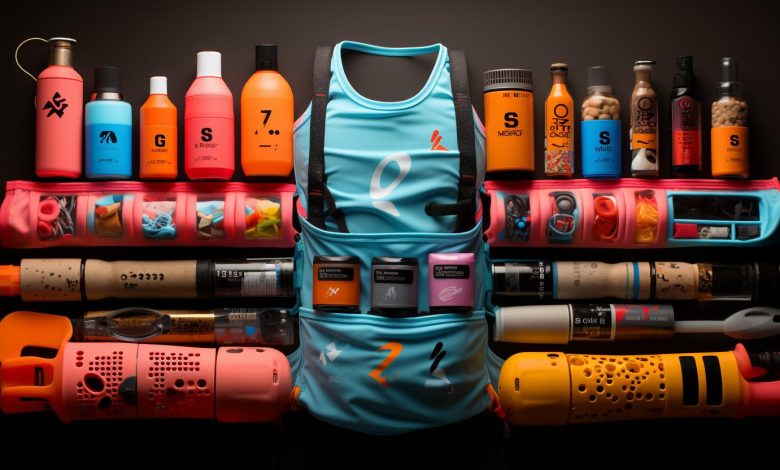Race Day Planning: Pacing, Fueling, and Hydration for Marathons

Ready to conquer your next marathon? Look no further than this comprehensive guide to race day planning.
Pacing, fueling, and hydration are key factors in achieving optimal performance. With expert tips and strategies, you’ll learn how to set a realistic pace, fuel your body effectively, and stay hydrated throughout the race.
From training for race day pacing to creating a personalized plan for success, this article has everything you need to cross that finish line with confidence.
Let’s dive in!
Setting a Realistic Pace

Before starting the race, it’s important to set a realistic pace that you can maintain throughout the marathon. Pace management is crucial for a successful race day. It involves finding the right balance between pushing yourself and conserving energy.
To achieve this, start by setting a target pace based on your training runs and race goals. Consider factors like terrain, weather conditions, and your current fitness level.
Mental preparation plays a significant role in pace management. Visualize yourself running at your desired pace during training sessions. This will help familiarize your mind with the rhythm and intensity required for race day. Additionally, practice positive self-talk to boost confidence and stay focused on maintaining your pace.
During the marathon, constantly monitor your speed using a GPS watch or timing splits at each mile marker. Pay attention to how your body feels; if you’re struggling to keep up with the planned pace early on, it may be necessary to adjust it slightly slower.
Remember that pacing is not just about going fast but also about finding a sustainable rhythm that allows you to finish strong. By setting a realistic pace and mentally preparing yourself for the challenge ahead, you’ll increase your chances of achieving a successful marathon experience.
Fueling Strategies for Optimal Performance

During a marathon, it’s important to properly fuel and hydrate in order to maintain optimal performance. Here are three key strategies for fueling during a marathon:
1. Pre-race nutrition: The food you eat before the race plays a crucial role in providing the energy needed for the long run. It’s essential to consume a balanced meal that includes carbohydrates for immediate energy, protein for muscle repair, and healthy fats for sustained energy. Avoid trying new foods on race day as it may lead to digestive issues.
2. On-the-run fueling: As you run, your body depletes its glycogen stores, so it’s vital to replenish them with regular intake of carbohydrates during the race. Energy gels, sports drinks, and chews are popular options that provide easily digestible sugars. Aim to consume around 30-60 grams of carbohydrates per hour of running.
3. Hydration: Staying hydrated is crucial for maintaining performance and preventing dehydration-related issues such as cramps or fatigue. Drink water or sports drinks at aid stations along the course to replace lost fluids. Listen to your body’s thirst signals but try not to overdrink either.
Hydration Tips and Strategies

Make sure you listen to your body’s thirst signals and drink water or sports drinks at aid stations to stay hydrated throughout your run. Hydration is of utmost importance when it comes to marathon training and racing. Proper hydration can enhance your performance, prevent cramps, and minimize the risk of dehydration-related complications. Timing is key when it comes to hydrating during a race.
You should aim to take small sips of fluids regularly rather than chugging large amounts all at once. During the early stages of the race, focus on taking in smaller amounts of fluid to avoid feeling too full or bloated. As you progress through the race and start sweating more, increase your fluid intake accordingly. The general rule of thumb is to consume about 4-6 ounces every 20 minutes, but this may vary depending on factors such as temperature and individual sweat rate.
It’s important to remember that hydration doesn’t only happen during the race; it starts well before the starting line. Make sure you are adequately hydrated leading up to race day by consistently drinking water throughout your training program.
Transitioning into the next section about training for race day pacing, it’s crucial to find a balance between maintaining a steady pace and fueling properly throughout the marathon.
Training for Race Day Pacing

Finding the right balance between maintaining a steady pace and properly fueling is crucial for training to run a marathon. When it comes to race day pacing, mental preparation plays a significant role in ensuring success. Here are three key factors to consider:
1. Set realistic goals: Before starting your training, it’s essential to establish achievable race day goals. This will help you develop an effective pacing strategy during your training runs. Visualize yourself crossing the finish line and use positive affirmations to build mental strength.
2. Incorporate interval training: Interval training involves alternating between high-intensity bursts of running and recovery periods of lower intensity or rest. This type of training improves aerobic fitness, increases speed, and enhances your ability to maintain an optimal pace during long-distance races like marathons.
3. Practice negative splits: Negative splitting refers to running the second half of a race faster than the first half. To achieve this, start your long runs at a conservative pace and gradually increase your speed throughout the run. This technique helps conserve energy for later stages of the marathon when fatigue sets in.
Creating a Race Day Plan for Success

To ensure a successful race, it’s important to create a detailed plan. This plan should include strategies for maintaining a steady pace and staying properly fueled and hydrated.
Your race day plan should begin with pre-race rituals that help you mentally prepare for the challenge ahead. These rituals could include visualization exercises, deep breathing techniques, or even listening to your favorite motivational music. The goal is to calm your nerves and get into the right mindset.
Once you’ve completed your pre-race rituals, it’s time to focus on the practical aspects of your plan. Start by determining your target pace for the race. This will depend on factors such as your training progress and personal goals. Break down this overall pace into smaller increments, so you have specific targets to aim for during different sections of the race.
Next, consider how you will fuel and hydrate throughout the race. Develop a strategy that works for you – whether it’s consuming energy gels at regular intervals or carrying a handheld water bottle – and practice using these methods during your training runs.
Lastly, don’t forget about mental preparation during the race itself. Stay positive and focused by reminding yourself of all the hard work you’ve put in during training. Use positive self-talk or repeat mantras to keep yourself motivated when things get tough.
Conclusion
Now that you have all the tools and knowledge to conquer your marathon, it’s time to put it into action.
As you lace up your shoes and step onto that starting line, remember the importance of setting a realistic pace.
Push yourself, but don’t forget to fuel and hydrate properly along the way.
With careful planning and training, success is within reach.
So go ahead, embrace the challenge and defy your limits.
The finish line awaits, ready for you to cross it triumphantly.






